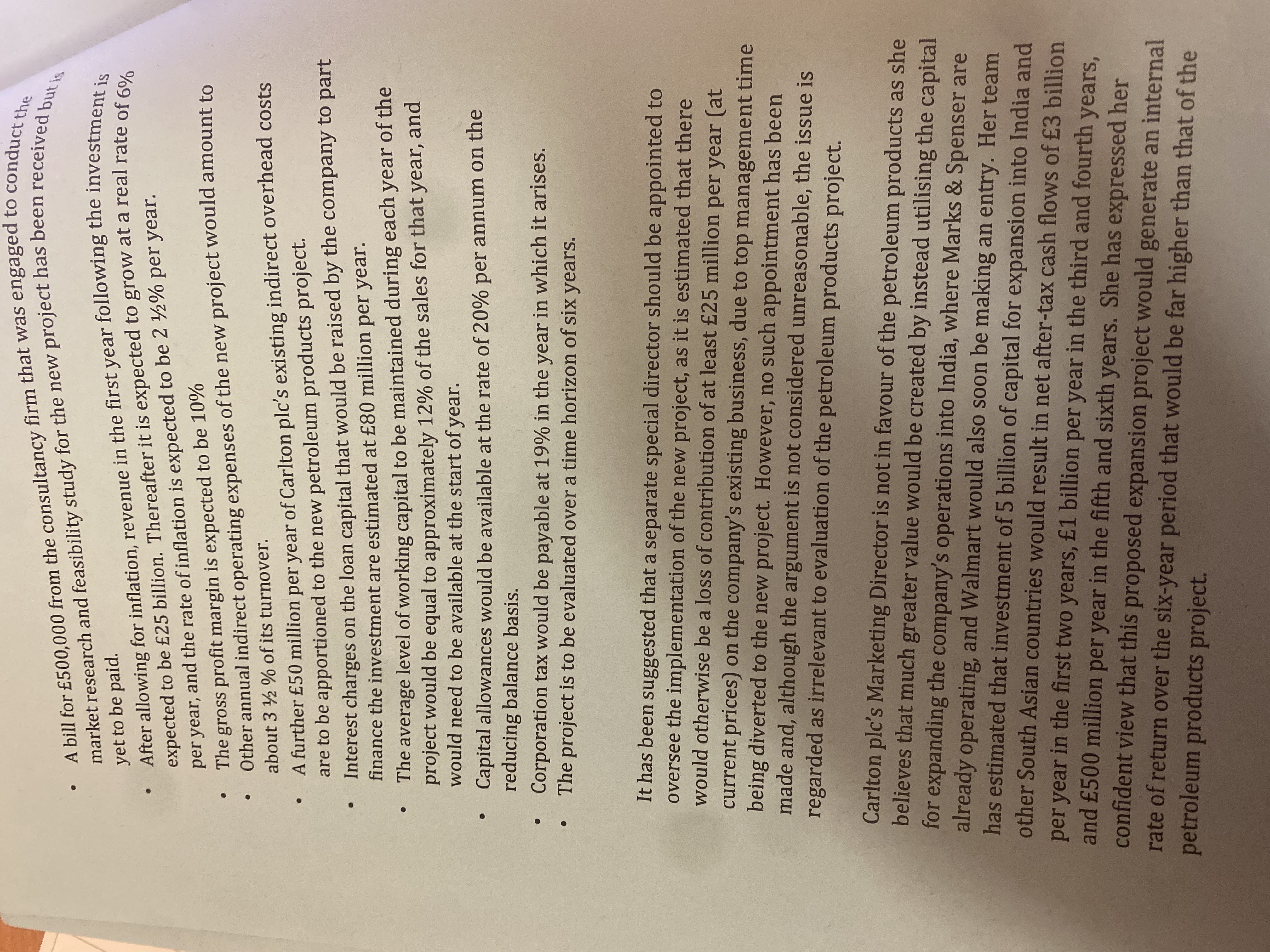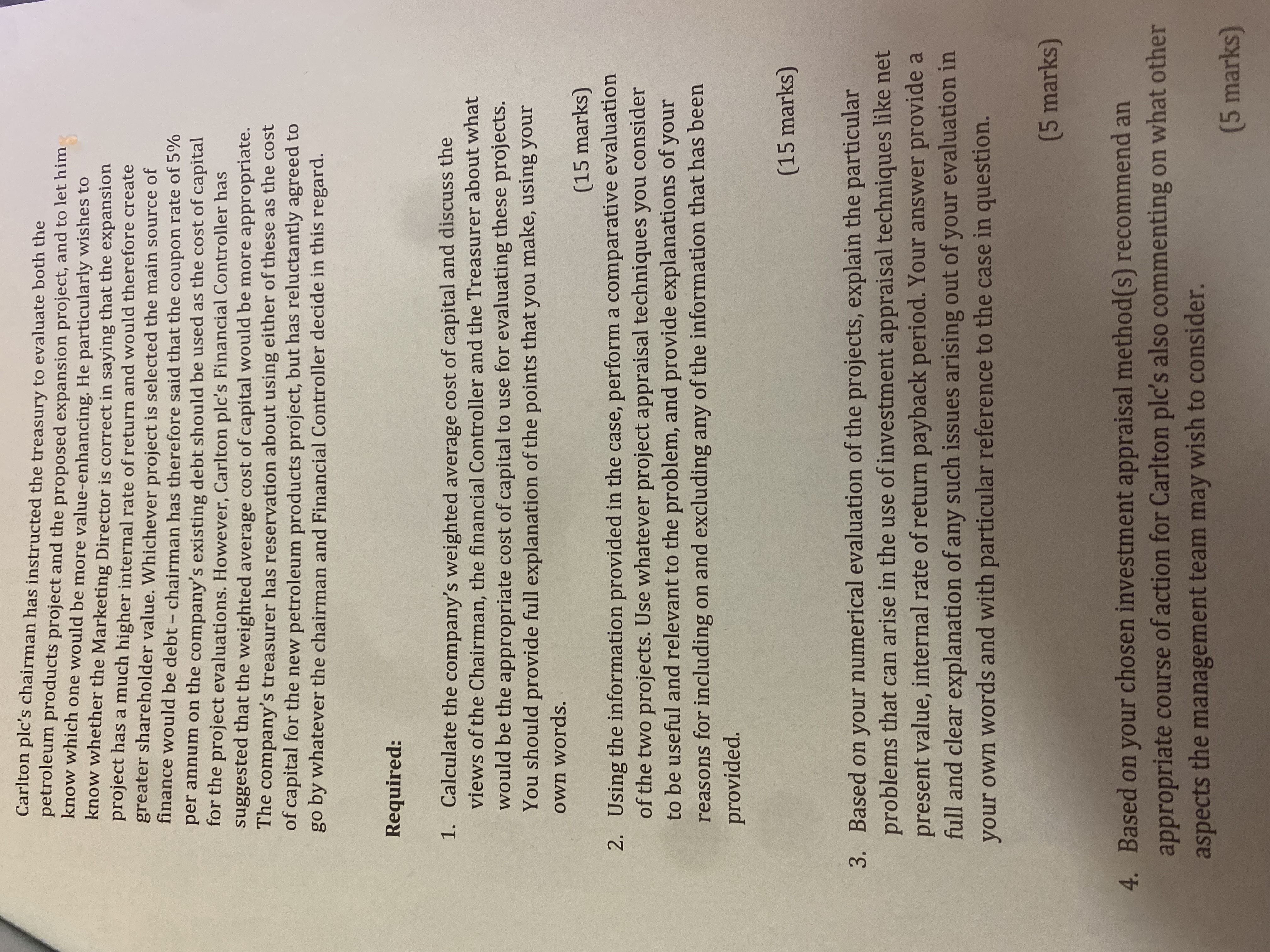Answered step by step
Verified Expert Solution
Question
1 Approved Answer
The most recent balance sheet of Carlton plc, a well-established food and drug retailer, is summarised below: Assets millions Liabilities & Equity millions Non-current



The most recent balance sheet of Carlton plc, a well-established food and drug retailer, is summarised below: Assets millions Liabilities & Equity millions Non-current assets 2,400 Equity -Ordinary shares (per value 500 50 pence) -Retained earnings 4,000 Secured 5% bonds (Par value 1,000 100) Current assets 5,600 Current Liabilities. 2,500 8,000 8,000 The company's bonds which pay an annual coupon of 5%, have seven years remaining until their maturity, when they will be redeemable at par. The bonds are currently trading at a market price of 98.50 The annual dividend paid by the company on its ordinary shares has grown from 15 pence per share nine years ago to the present level of 21 pence per share, and is expected to continue to grow at a similar rate in the future. The company's ordinary shares are currently trading at a price of 257 pence ex-dividend. Carlton plc is considering two alternative investment projects one for expansion of its existing business, another for diversification into petroleum products. These are mutually exclusive projects. Carlton plc's Managing Director has instructed the treasury team to calculate the company's weighted average cost of capital based on the information provided above, and use it to evaluate the petroleum products projects for which the following estimates have been drawn up: The initial capital investment required would be 2 billion, and the residual value of this investment at the end of the project's life of six years is expected to be 7 % % of the original cost. A bill for 500,000 from the consultancy firm that was engaged to conduct the market research and feasibility study for the new project has been received but is yet to be paid. After allowing for inflation, revenue in the first year following the investment is expected to be 25 billion. Thereafter it is expected to grow at a real rate of 6% per year, and the rate of inflation is expected to be 2 The gross profit margin is expected to be 10% % per year. Other annual indirect operating expenses of the new project would amount to about 3 %2% of its turnover. A further 50 million per year of Carlton plc's existing indirect overhead costs are to be apportioned to the new petroleum products project. Interest charges on the loan capital that would be raised by the company to part finance the investment are estimated at 80 million per year. The average level of working capital to be maintained during each year of the project would be equal to approximately 12% of the sales for that year, and would need to be available at the start of year. Capital allowances would be available at the rate of 20% per annum on the reducing balance basis. Corporation tax would be payable at 19% in the year in which it arises. The project is to be evaluated over a time horizon of six years. It has been suggested that a separate special director should be appointed to oversee the implementation of the new project, as it is estimated that there would otherwise be a loss of contribution of at least 25 million per year (at current prices) on the company's existing business, due to top management time being diverted to the new project. However, no such appointment has been made and, although the argument is not considered unreasonable, the issue is regarded as irrelevant to evaluation of the petroleum products project. Carlton plc's Marketing Director is not in favour of the petroleum products as she believes that much greater value would be created by instead utilising the capital for expanding the company's operations into India, where Marks & Spenser are already operating, and Walmart would also soon be making an entry. Her team has estimated that investment of 5 billion of capital for expansion into India and other South Asian countries would result in net after-tax cash flows of 3 billion per year in the first two years, 1 billion per year in the third and fourth years, and 500 million per year in the fifth and sixth years. She has expressed her confident view that this proposed expansion project would generate an internal rate of return over the six-year period that would be far higher than that of the petroleum products project. Carlton plc's chairman has instructed the treasury to evaluate both the petroleum products project and the proposed expansion project, and to let him know which one would be more value-enhancing. He particularly wishes to know whether the Marketing Director is correct in saying that the expansion project has a much higher internal rate of return and would therefore create greater shareholder value. Whichever project is selected the main source of finance would be debt - chairman has therefore said that the coupon rate of 5% per annum on the company's existing debt should be used as the cost of capital for the project evaluations. However, Carlton plc's Financial Controller has suggested that the weighted average cost of capital would be more appropriate. The company's treasurer has reservation about using either of these as the cost of capital for the new petroleum products project, but has reluctantly agreed to go by whatever the chairman and Financial Controller decide in this regard. Required: 1. Calculate the company's weighted average cost of capital and discuss the views of the Chairman, the financial Controller and the Treasurer about what would be the appropriate cost of capital to use for evaluating these projects. You should provide full explanation of the points that you make, using your own words. (15 marks) 2. Using the information provided in the case, perform a comparative evaluation of the two projects. Use whatever project appraisal techniques you consider to be useful and relevant to the problem, and provide explanations of your reasons for including on and excluding any of the information that has been provided. (15 marks) 3. Based on your numerical evaluation of the projects, explain the particular problems that can arise in the use of investment appraisal techniques like net present value, internal rate of return payback period. Your answer provide a full and clear explanation of any such issues arising out of your evaluation in your own words and with particular reference to the case in question. (5 marks) 4. Based on your chosen investment appraisal method(s) recommend an appropriate course of action for Carlton plc's also commenting on what other aspects the management team may wish to consider. (5 marks)
Step by Step Solution
There are 3 Steps involved in it
Step: 1

Get Instant Access to Expert-Tailored Solutions
See step-by-step solutions with expert insights and AI powered tools for academic success
Step: 2

Step: 3

Ace Your Homework with AI
Get the answers you need in no time with our AI-driven, step-by-step assistance
Get Started


